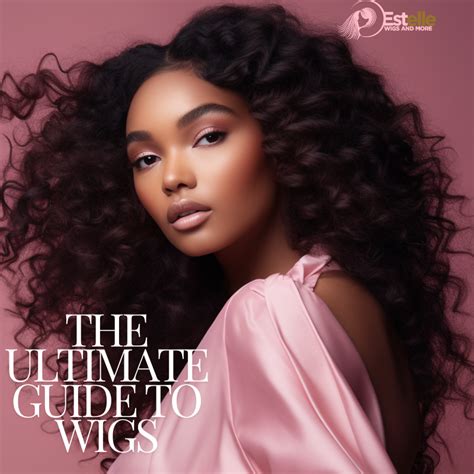Whether you’re a seasoned hair enthusiast or just starting to explore the world of hair extensions, lace frontal lace closures are a must-know for achieving flawless, natural-looking styles. This comprehensive guide will dive into everything you need to know about these revolutionary hairpieces, from types and materials to installation and maintenance.

Types of Lace Frontal Lace Closures
1. Transparent Lace: Virtually invisible, this lace blends seamlessly with all skin tones, offering an undetectable finish.
2. HD Lace: An even more advanced lace with a super-thin and transparent appearance, perfect for creating the illusion of a natural scalp.
3. Swiss Lace: A durable and slightly textured lace that conceals knots well, making it ideal for updos and intricate hairstyles.
4. French Lace: A luxurious and delicate lace with a soft, almost silky feel, providing a seamless look.
Materials and Cap Constructions
1. Human Hair: The most natural option, human hair closures offer unmatched versatility and durability. They can be styled, colored, and heat-treated like your own hair.
2. Synthetic Hair: An affordable and low-maintenance alternative, synthetic hair closures come in various textures and colors, but they are not as durable or heat-resistant as human hair.
3. Mono Base: A thin, durable, and breathable base that provides a natural look and scalp-like feel.
4. Silk Base: A luxurious and ultra-realistic base that mimics the human scalp, offering the most undetectable finish.
Installation Techniques
1. Adhesive: Using strong glue or tape, this method provides secure attachment and is suitable for both frontal and closure pieces.
2. Sew-In: Involving weaving the closure into your natural hair, this technique is more permanent and requires professional skill.
3. Clip-In: A temporary option that allows for easy removal and reattachment, clip-in closures are ideal for quick style changes.
Maintenance and Care
1. Washing: Gently wash your closure weekly or as needed with a mild shampoo designed for human or synthetic hair.
2. Conditioning: Use a deep conditioner every few washes to keep your closure soft and manageable.
3. Drying: Air-dry your closure away from direct heat to prevent damage.
4. Styling: Avoid excessive heat styling or chemical treatments to prolong the lifespan of your closure.
Common Mistakes to Avoid
1. Choosing the Wrong Lace Type: Mismatched lace color or texture can create a noticeable line of demarcation.
2. Improper Bonding: Using the wrong adhesive or technique can lead to shedding, damage, or skin irritation.
3. Over-Styling: Excessive heat or styling products can weaken the hair and shorten the life of your closure.
4. Neglecting Maintenance: Regular washing, conditioning, and drying are essential for maintaining the health and longevity of your closure.
Pros and Cons
Pros:
- Natural-Looking: Lace closures create the illusion of a seamless hairline and scalp.
- Versatile: Allows for a wide range of hairstyles, from buns to braids and updos.
- Protective: Shields your natural hair from heat damage and environmental factors.
- Long-Lasting: High-quality closures can last for several months with proper care.
Cons:
- Cost: Lace closures can be more expensive than other hair extensions.
- Installation: Professional installation is recommended for optimal results.
- Maintenance: Requires regular washing, conditioning, and styling to maintain its beauty.
Innovative Applications of Lace Frontal Lace Closures
1. Natural Hairline Extensions: Extend your hairline backward to create a more voluminous and youthful appearance.
2. Temporal Tapers: Conceal thinning hair at the temples or create a modern, edgy look.
3. Parting Enhancements: Add or alter your part line to flatter your face shape or create a desired style.
4. Creative Updos: Integrate closures into elaborate updos for added volume and dimension.
Tables for Further Understanding
Table 1: Lace Frontal Lace Closure Lace Types
| Lace Type | Description |
|---|---|
| Transparent Lace | Virtually invisible, blends with all skin tones |
| HD Lace | Super-thin and transparent, creates a natural scalp appearance |
| Swiss Lace | Durable and textured, conceals knots well |
| French Lace | Luxurious and delicate, provides a seamless look |
Table 2: Material and Cap Constructions
| Material | Cap Construction |
|---|---|
| Human Hair | Mono Base, Silk Base |
| Synthetic Hair | Mono Base, Silk Base |
Table 3: Installation Techniques
| Installation Technique | Description |
|---|---|
| Adhesive | Using glue or tape for secure attachment |
| Sew-In | Weaving the closure into natural hair for a more permanent hold |
| Clip-In | Temporary option for easy removal and reattachment |
Table 4: Pros and Cons of Lace Frontal Lace Closures
| Pros | Cons |
|---|---|
| Natural-looking | Cost |
| Versatile | Installation |
| Protective | Maintenance |
| Long-lasting |
